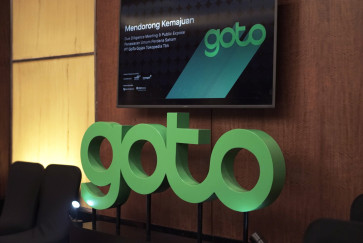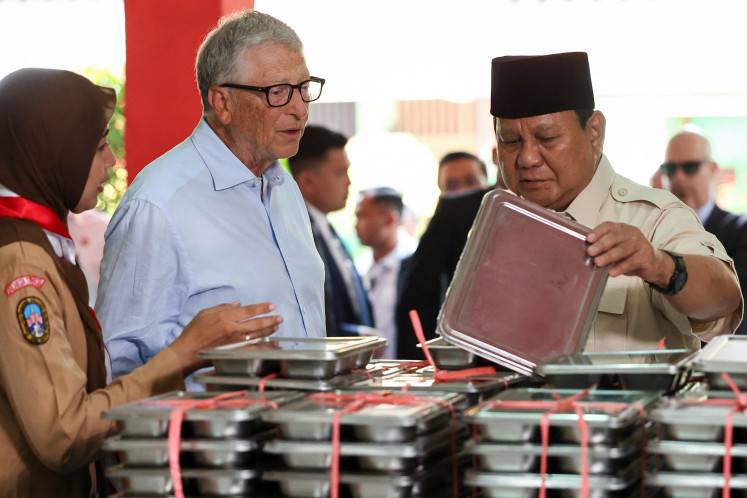Foreign investors now more interested in secondary sector
Foreign investors have shifted their focus from Indonesiaâs mining and plantation industries to those in the secondary sector such as the food, automotive, chemical and pharmaceutical industries, which are considered more promising now, according to the Investment Coordinating Board (BKPM)
Change text size
Gift Premium Articles
to Anyone

F
oreign investors have shifted their focus from Indonesia's mining and plantation industries to those in the secondary sector such as the food, automotive, chemical and pharmaceutical industries, which are considered more promising now, according to the Investment Coordinating Board (BKPM).
Indonesia's huge market coupled with an emerging middle class, a growing economy and increased consumer spending, have attracted foreign investors to pour their money into Southeast Asia's largest economy.
That has replaced investors' long-time interests in exploiting the country's natural resources, BKPM chairman Mahendra Siregar said on Monday during Apkasi International Trade and Investment Summit (AITIS) 2014, which will last until Thursday in Kemayoran.
'The situation is different right now. Foreign investors came to the country due to our abundant natural resources in the primary sector around 20 years ago. But in recent years, they invest due to our interesting market in the
secondary sector such as the food industry and chemical industry,' said Mahendra.
Foreign direct investment (FDI) in the secondary sector reached US$15.8 billion last year from $3.3 billion in 2010. Meanwhile, the primary sector saw slower growth despite having more than doubled in the 2010-2013 period to $6.4 billion from $3 billion, according to data from the BKPM.
The automotive industry dominated investment in the secondary sector at $3.7 billion last year, followed by the machinery and metal industries' $3.3 billion investment and $2.1 billion in food industry. Rubber and plastic, textile as well as leather goods and footwear are also categorized under the secondary sector.
Meanwhile, the mining sector held the largest share for investment in the primary sector with a total of $4.8 billion investment last year, followed by plantation's $1.6 billion. Forestry, fishery and livestock industries are also included in the primary sector.
'Our main duty is how to sustain the country's bullish market, not only to create it,' Mahendra said.
Indonesia's FDI reached Rp 270.4 trillion (US$23.6 billion) last year, up 22.4 percent from the previous year. The government has targeted for FDI to grow by at least 15 percent this year.
However, the country still faces traditional issues in a bid to make foreign investors more keen to invest, specifically on red tape and land acquisitions, said Coordinating Economic Minister Hatta Rajasa said when opened the event.
'We still see some regions run long winded bureaucracy to investors who come to invest. It should be streamlined,' Hatta said at the same event.
To cut the long winded bureaucracy, the government still relies on one-roof integrated services (PTSP), which aims at providing fast and easy license services in an accountable and transparent manner, according to Mahendra.
Out of 524 cities and regencies across the archipelago, 89 have yet to run PTSP.
Mahendra added that out of 435 cities and regencies that have run PTSP, 217 have run an electronic licensing and information service (SPIPISE), also known as the National Single Window for Investment.
The electronic system, according to Mahendra, has two benefits: bypassing complicated procedures and document handling for investment procedures, while also creating a way for investors not having to be present in Indonesia to deal with all the licensing processes, by completing key procedures online. (alz)









